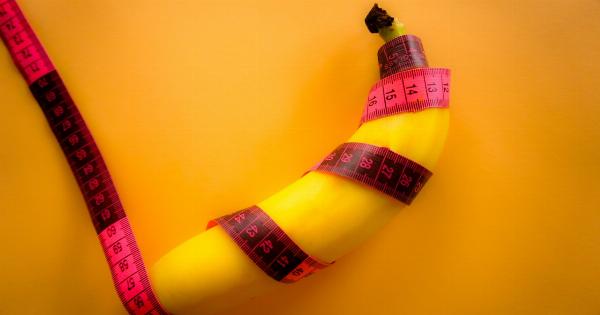Penis size has been a topic of curiosity and fascination for centuries. Many men have wondered if their size is considered average, small, or large.
This fascination has led to extensive research on the science of penis size, aiming to provide accurate information and dispel common misconceptions. In this article, we will delve into the various aspects of researching penis size, including studies, methodologies, average sizes, and the psychological impact it has on men.
Methods of Measurement
When it comes to measuring penis size, researchers have established specific methodologies to ensure accuracy and consistency. Two common methods of measurement are:.
Self-Reported Surveys
One of the commonly used methodologies is self-reported surveys, where individuals are asked to measure and report their own penis size.
Although this method heavily relies on honesty, it has limitations due to potential exaggeration or underestimation by participants.
Professional Measurements
Another way to measure penis size is through professional measurements. Researchers or healthcare professionals use standardized methods to measure both flaccid and erect penis lengths and girths.
This method ensures consistency and minimizes errors introduced by self-reporting.
Average Penis Size
Through extensive research, a comprehensive understanding of average penis size has been established.
The most widely accepted average erect penis size is approximately 13.12 centimeters (5.16 inches) in length and 11.66 centimeters (4.59 inches) in girth. It is important to note that there is significant variation in size among individuals, and the average serves as a guideline rather than a definitive measure.
Factors Affecting Penis Size
Multiple factors influence penis size, including:.
Genetics
Genetics play a crucial role in determining penis size. Studies have suggested that genetic factors can contribute to variations in both flaccid and erect penis sizes among men.
However, the specific genes responsible for this variance are yet to be identified.
Hormonal Influence
Hormones released during puberty, especially testosterone, have a significant impact on penis size development. Adequate levels of testosterone are essential for the growth and development of the penis during adolescence.
Body Weight
There is a correlation between body weight and penis size.
Research has shown that individuals with higher body mass indexes (BMI) tend to have smaller penises due to the presence of excess fat around the pubic area, which can obscure part of the penile shaft.
Race and Ethnicity
Studies have indicated that there are variations in average penis size among different races and ethnicities.
However, it is crucial to understand that these variations are relatively small and should not contribute to stereotypes or discriminatory beliefs.
Cultural Perceptions
Cultural perception of penis size can significantly impact the way men view themselves and their sexual confidence.
Societal attitudes and media portrayal of what is considered an “ideal” penis size can lead to anxiety or body dysmorphia in some individuals.
Psychological Effects
Research has shown that penis size can have psychological effects on men, especially those who believe they are smaller than average. This can lead to issues such as body dissatisfaction, low self-esteem, and performance anxiety.
It is essential to address these concerns through education and counseling.
Misconceptions and Myths
Penis size has been the subject of numerous myths and misconceptions. It is crucial to debunk these misconceptions to provide accurate information and alleviate unnecessary anxiety among individuals. Some common myths include:.
Penis Size and Fertility
Contrary to popular belief, there is no direct correlation between penis size and fertility. The ability to father a child depends on various factors, such as sperm count, motility, and overall reproductive health, rather than penis size alone.
Penis Size and Sexual Pleasure
Another misconception is that larger penises guarantee greater sexual pleasure for both partners. In reality, sexual satisfaction is influenced by numerous factors, including emotional connection, technique, and overall sexual compatibility.
Conclusion
The science of penis size research aims to provide accurate information to counter myths and misconceptions surrounding this topic.
Understanding the methodologies, average sizes, and psychological effects can help individuals develop a healthier perception of their own bodies and improve their overall well-being.



























